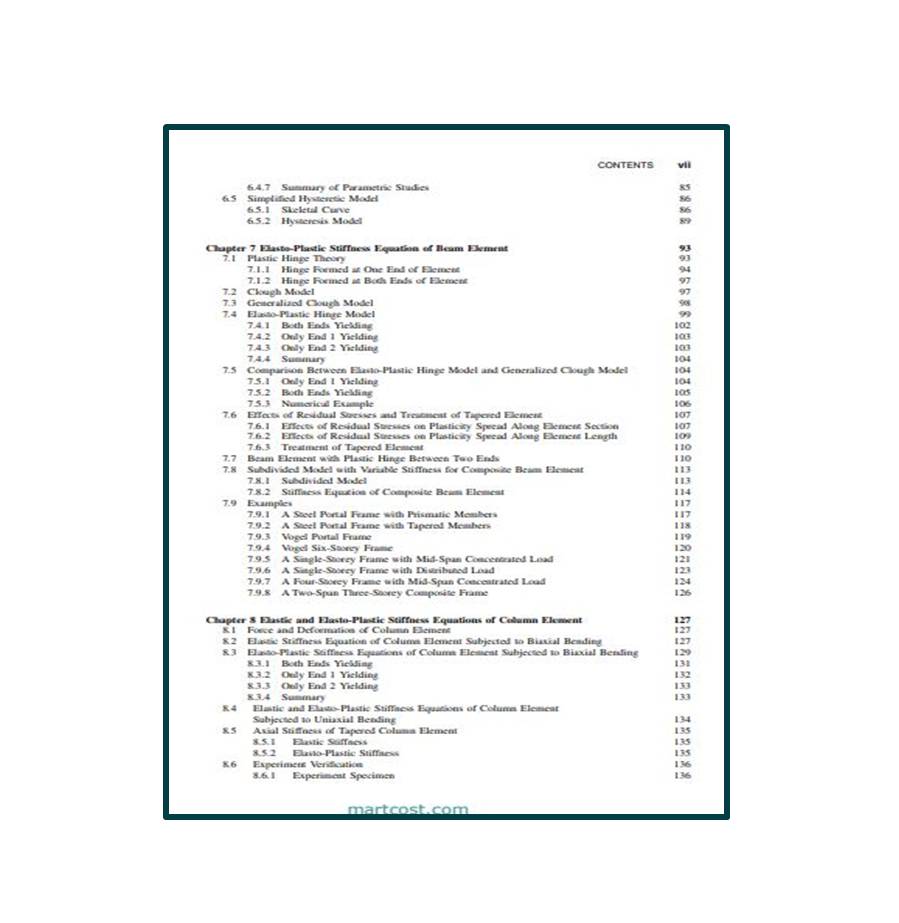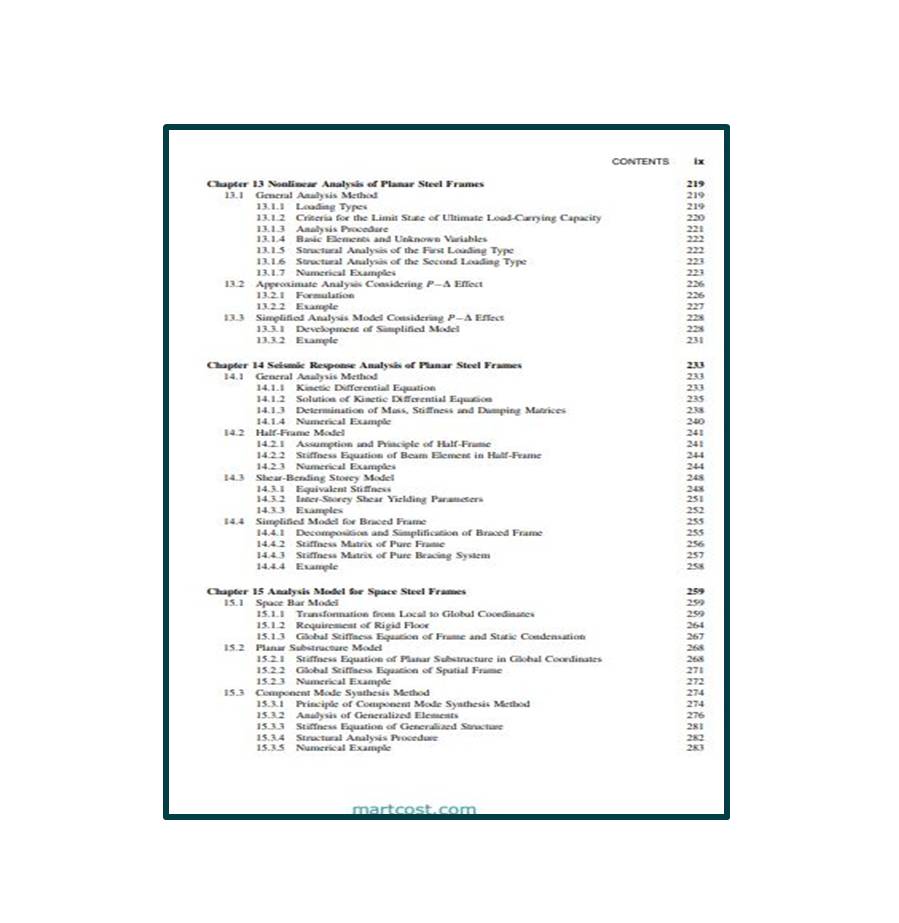Description
Name of Book :– Advanced Analysis and Design of Steel Frames
Page Length :- 371
Preface
With advantages in high strength, good ductility and fast fabrication and erection, steel frames are widely used for industrial, commercial and residential buildings. Currently, the common procedures for the structural design of steel frames worldwide are: (1) to conduct linearly elastic structural analysis to determine the resultants of structural members under various actions; and (2) to check the resultants against the limit states of structural members specified in the codes, based on the reliability theory for the limit state of structural members. However, drawbacks of the current approach exist in the following two aspects. Firstly, the normal elastic analysis of steel frames takes account of only typical flexural, shear and axial deformations of frame components, and cannot consider effects such as shear deformation of joint-panels, flexibility of beam-to-column connections, brace buckling and non-prismatic sections (tapered members). Also, material and geometric nonlinearities and imperfection (residual stress and initial geometric imperfection) cannot be involved in linearly elastic analysis. Secondly, the structural members of a frame is generally in an elasto-plastic state when they approach limit states, whereas the member resultants used in limit state check are taken from the linearly elastic analysis of the frame. The incompatibility of the member resultants obtained in structural analysis for limit state check and those in real limit state results in uncertain member reliability. To overcome the drawback mentioned above, the concept of Advanced Design has been proposed. Second-order inelastic analysis is used in Advanced Design of steel frames to determine the structural ultimate capacities, which considers all the effects significant for structural nonlinear behavior and is termed as advanced analysis.












nice